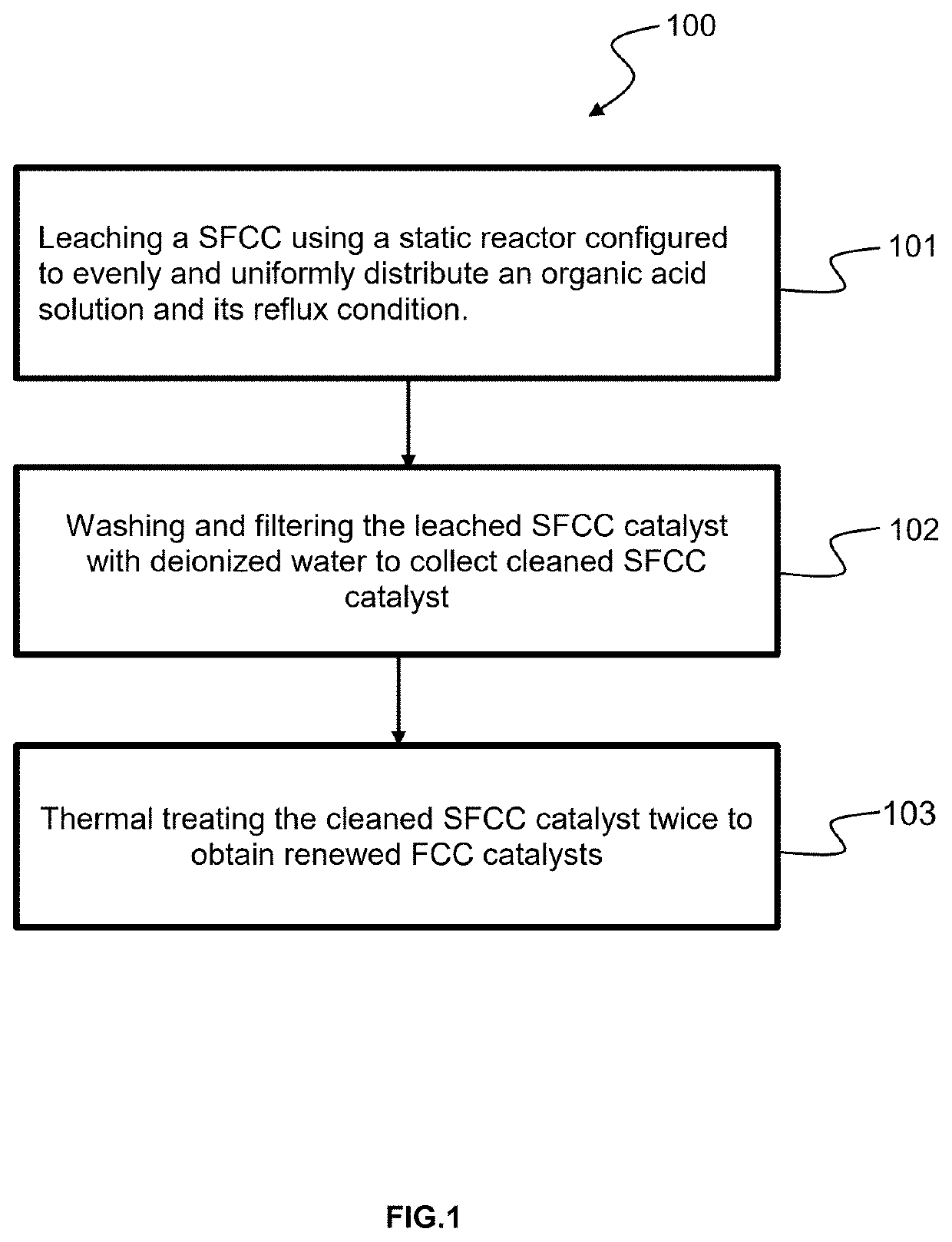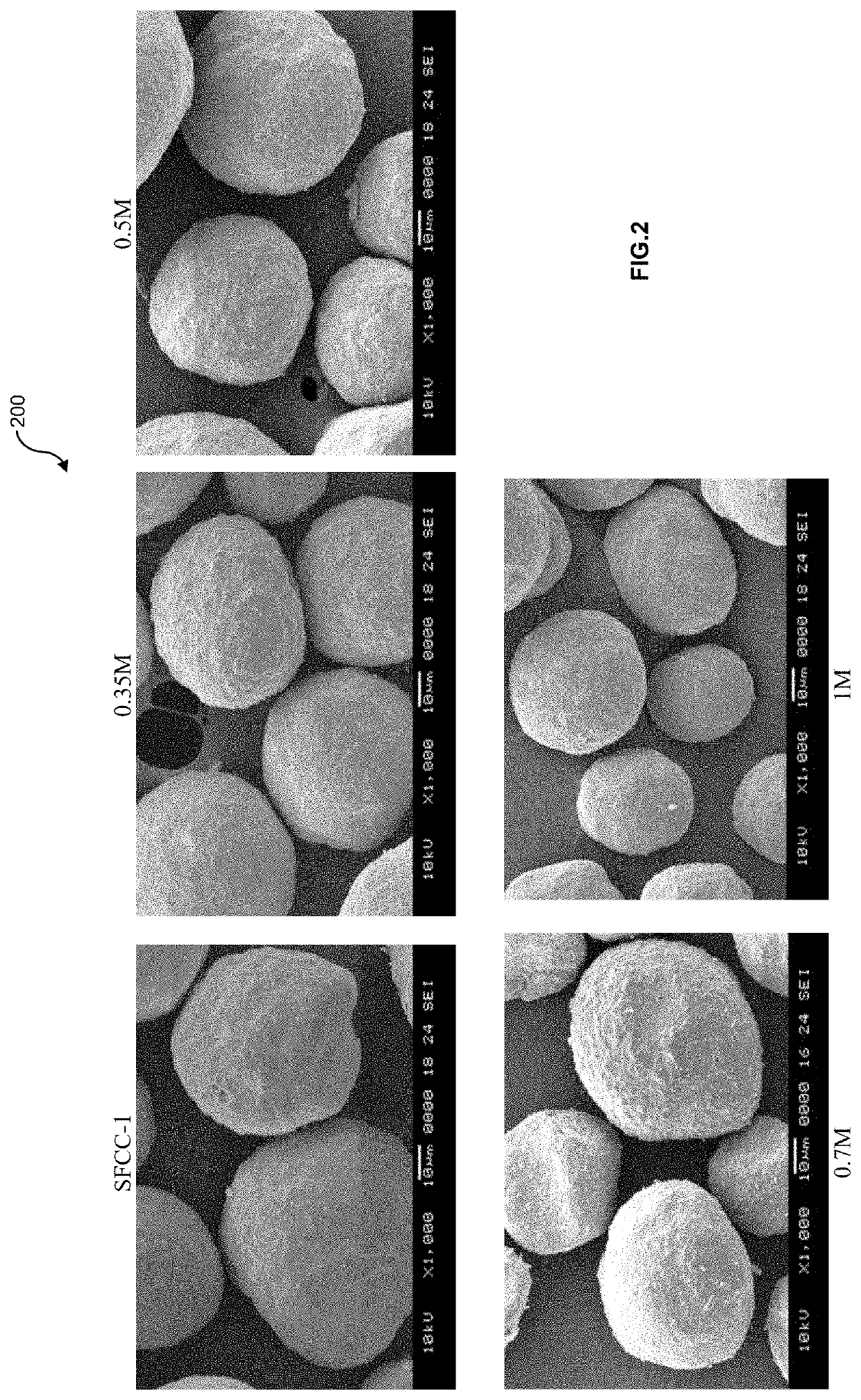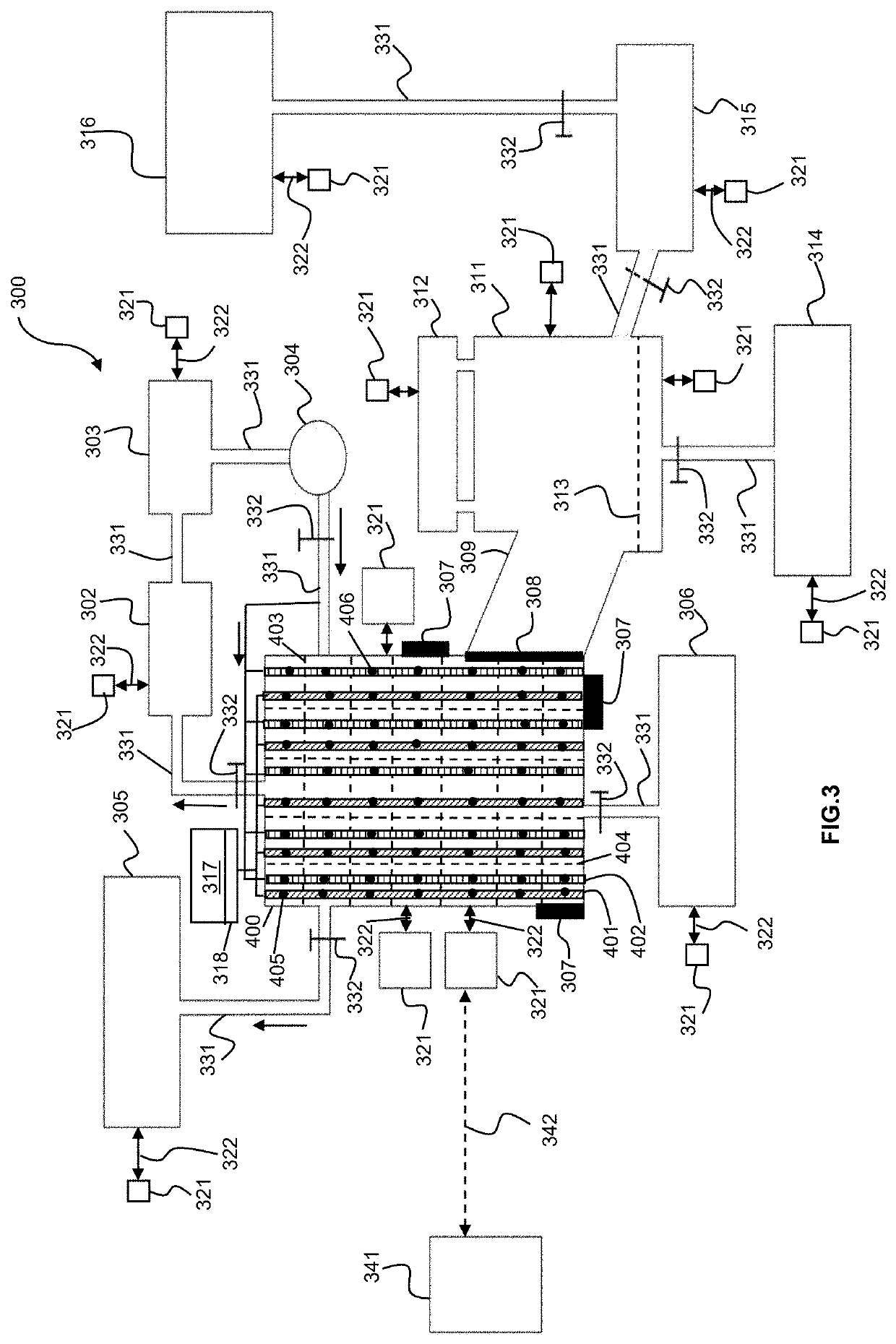Method and system for renewing spent fluid catalytic cracking (SFCC) catalysts using acid leaching and acid reflux activities
- Summary
- Abstract
- Description
- Claims
- Application Information
AI Technical Summary
Benefits of technology
Problems solved by technology
Method used
Image
Examples
examples
[0038]The following examples are intended to be illustrative of the present invention to teach one of ordinary skill in heart to make and use the invention and are not intended to limit the scope of the invention in any way.
examples 1-6 (comparative)
[0039]These examples demonstrate the effects of concentration of acidic solution on the physicochemical properties and catalytic activity of FCC catalyst. The examples also illustrate the criticality of the process parameters.
[0040]SFCC-1 catalyst was provided by a Vietnamese refinery in April 2019. In examples 1-6, each 20 g spent catalyst was treated with 100 ml oxalic acidic solution at different concentration 0.2M, 0.35M, 0.5M, 0.7M, 1M and 1.5M within 60 minutes at 100° C., pH 1.5, in reflux.
[0041]The specific surface areas and pore volumes of the catalyst samples were determined by nitrogen adsorption measurement at −196° C. on a Micrometrics TriStar 3020 Micromeritics unit. Samples were prepared using a Micrometrics SmartPrep 065 by degassing under nitrogen flow at 400° C. The zeolite and matrix surface areas were calculated following the ASTM D4365 (2013). The elements content in leachate solution after step i) were determined by ICP method using an ICP-OES spectrometer OPTI...
example 7
[0052]This example determinates the effect of the oxalic acid treatment process in this invention to another SFCC-2 catalyst which were discarded from a Japanese refinery. That SFCC-2 catalyst was treated in the same condition with one in example 3 to compare.
[0053]Example 3 and example 7 have same trend of surface area and cracking activity. After treatment, SFCC-1 and SFCC-2 have all higher surface area in zeolite term as well as matrix term. The same rising trend in cracking conversion was observed in example 7, it increased from 46.4 wt. % to 74.3 wt. %. Bottom cracking was highly improved, HCO yield dropped by approximately 23 wt. % for SFCC-2. The other beneficial products as gasoline and LPG had also a significant increase.
[0054]
TABLE 5Surface area and cracking activity of 2 different SFCC at the sameleaching conditionTreated Treated SamplesSFCC-1SFCC-1SFCC-2SFCC-2Example37Total Surface Area (m2 / g)145186140193Zeolite Surface Area (m2 / g) 8494116138Matrix Surface Area (m2 / g)619...
PUM
| Property | Measurement | Unit |
|---|---|---|
| Temperature | aaaaa | aaaaa |
| Temperature | aaaaa | aaaaa |
| Temperature | aaaaa | aaaaa |
Abstract
Description
Claims
Application Information
 Login to View More
Login to View More - R&D
- Intellectual Property
- Life Sciences
- Materials
- Tech Scout
- Unparalleled Data Quality
- Higher Quality Content
- 60% Fewer Hallucinations
Browse by: Latest US Patents, China's latest patents, Technical Efficacy Thesaurus, Application Domain, Technology Topic, Popular Technical Reports.
© 2025 PatSnap. All rights reserved.Legal|Privacy policy|Modern Slavery Act Transparency Statement|Sitemap|About US| Contact US: help@patsnap.com



